#LiFePO4 Battery
Text
GeePower is a large-scale LiFePO4 battery factory in China, was founded in early 1982 to produce battery raw materials, and started to produce batteries in 1988. After 40years of development, has grown to become the pioneer of the rechargeable battery industry in China with about 500 staff and two production bases, the current annual production capacity is more than 500 million ampere hours.

8 notes
·
View notes
Text
youtube
Harveypower Lifepo4 Battery Pack Production Steps - Powerwall
Welcome to Harveypower's exclusive behind-the-scenes look at our Lifepo4 Battery Pack Production Steps for Powerwall. In this video, we invite you to witness the intricate process of how our expert technicians craft our top-of-the-line battery packs with the highest quality standards. From the precise battery cell stacking and bundling to the careful busbar connection, every step is executed with the utmost attention to detail.
Our advanced laser welding technology ensures the strongest bonds between each cell, ensuring maximum reliability and longevity. Once the battery pack is carefully fixed in its durable case, our technicians begin connecting the cables and performing a thorough voltage test to guarantee flawless performance.
Our wire harness assembly process is designed to deliver optimal power efficiency, while the port panel and BMS assembly ensure easy and convenient access to your battery pack.
At Harveypower, we take pride in producing high-quality products that our customers can rely on. We invite you to witness our battery production process firsthand and experience the excellence that goes into each and every one of our Lifepo4 Battery Packs.
#lifepo4 battery#lithium iron phosphate battery#lfp battery#lithium battery#solar battery#lithium manufacturer#lithium ion battery#lithium#solar battery storage#youtube#Youtube
2 notes
·
View notes
Text
Enhance Your Golf Cart's Performance with the EVE LF105 Grade-A Cells 3.2V LiFePO4 105Ah Battery (with M6 Terminals)
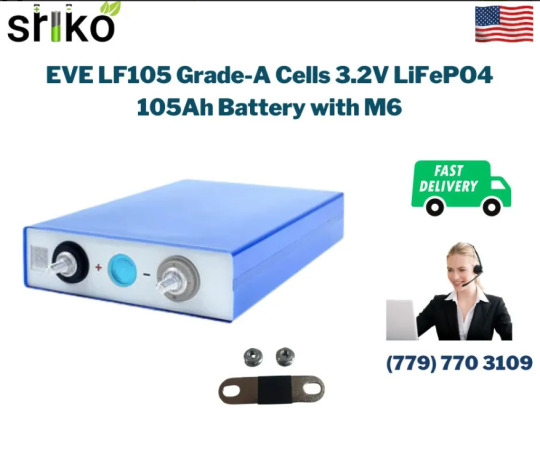
Golf carts have become essential for various applications, from leisurely rounds on the golf course to efficient transportation in residential communities and resorts. A reliable power source is crucial for ensuring these vehicles operate at their best. The EVE LF105 Grade-A Cells 3.2V LiFePO4 105Ah Battery, featuring M6 terminals, provides a superior power solution designed to meet the specific needs of golf carts. In this article, we'll explore the features and benefits of this advanced battery, demonstrating how it can significantly enhance your golf cart's performance and reliability.
Premium Grade-A Cells: The EVE LF105 Battery is built with premium Grade-A cells, renowned for their high performance and exceptional reliability. These cells are engineered to deliver consistent and powerful energy output, ensuring your golf cart performs optimally even in demanding conditions. The Grade-A quality guarantees a longer lifespan and dependable operation.
High Energy Capacity: With a robust capacity of 105Ah, the EVE LF105 Battery offers substantial energy storage to keep your golf cart running through extended rounds on the course or for prolonged use in various settings. This high capacity ensures continuous and reliable performance, reducing the need for frequent recharges and allowing for more uninterrupted usage.
Efficient M6 Terminals: The battery is equipped with M6 terminals, which provide efficient and secure connectivity. These terminals are designed for easy installation, ensuring a solid and reliable connection that minimizes energy loss and maximizes power transfer to your golf cart's systems. This efficiency translates into better overall performance and reliability.
Compact and Lightweight Design: Despite its impressive capacity, the EVE LF105 Battery maintains a compact and lightweight design. This design simplifies installation and integration into your golf cart, saving space and reducing the vehicle's overall weight. The lighter load improves maneuverability and handling, enhancing the driving experience.
Easy Integration: The EVE LF105 Battery is designed for seamless integration into a wide range of golf cart models and configurations. Whether you are upgrading an existing vehicle or installing a new battery system, the EVE LF105 ensures compatibility and straightforward installation. This ease of integration minimizes downtime and maximizes productivity, getting your golf cart back on the course or the road quickly.
Conclusion: The EVE LF105 Grade-A Cells 3.2V LiFePO4 105Ah Battery with M6 Terminals is a top-tier power solution for golf carts, offering superior performance, reliability, and efficiency. With its premium-grade cells, high energy capacity, efficient terminals, compact design, and easy integration, this battery is designed to enhance your golf cart's overall performance. Upgrade your golf cart today and experience the improved power and reliability of the EVE LF105 Battery.
#Cell Lithium Battery#EVE 105Ah cells#EVE 105Ah M6#eve cells#LFP Cells#Lifepo4 Battery#Prismatic cells
0 notes
Text

Unleash the potential of balcony solar system installations: Install solar energy storage batteries to achieve energy independence and save money on electricity bills, adopt reliable solar storage solutions, and ultimately achieve sustainable power energy practices.
Click on the website to understand product details:
600W outdoor solar energy storage battery manufactured by Dongguan OMMO Company
Product parameters:
Output Power: 600w
Capacity:512Wh
Output Peak power:>630W (60s Constant power protection)
Battery Type:LiFePO4 20Ah*8pcs ( 8S1P)
Input:AC 120V, 5.2A (500W )
AC output/AC:AC 110V/220V 700W Pure sine wave output*3
USB Output/USB:QC3.02(18W) Type-c2(PD60W)
Charging time:1~1.1hours
DC output/DC:12V/10A
Certificate: CE, FCC, ROHS, PSE, MSDS, UN38.3
Warranty period:18 months
Battery brand: EVE
Insurance: YES
Recycle times:2000
1 note
·
View note
Text
In-Depth Analysis of EVE 3.2V 314AH LiFePO4 Battery Cells

EVE Energy Co., Ltd., established in 2001 and headquartered in Huizhou, Guangdong, China, has emerged as a global leader in the lithium battery industry. EVE specializes in the research, development, production, and sale of both primary and secondary lithium batteries. The company’s extensive product portfolio serves a wide array of applications, including electric vehicles (EVs), energy storage systems (ESS), smart meters, and consumer electronics. Known for its commitment to innovation, quality, and sustainability, EVE has built a solid reputation as a trusted name in the battery market.
EVE's latest product, the EVE 3.2V 314AH LiFePO4 battery cell, marks a significant advancement in the company’s offerings. This new product showcases EVE’s continuous efforts to push the boundaries of battery technology and deliver superior energy storage solutions.
Product Development:
Research and Innovation: The development of the 3.2V 314AH LiFePO4 cell involved extensive research and innovation. EVE’s team of scientists and engineers worked tirelessly to optimize the cell’s design, materials, and manufacturing processes to achieve the best possible performance.
Rigorous Testing: Before its launch, the 3.2V 314AH cell underwent rigorous testing to ensure it meets the highest standards of safety, reliability, and performance. These tests included assessments of capacity, energy density, cycle life, thermal stability, and safety under various operating conditions.
Key Features of the EVE 3.2V 314AH LiFePO4 Battery Cells
High Energy Density and Capacity:
Energy Density: The 3.2V 314AH cell offers high energy density, providing substantial energy storage in a compact form factor. This is crucial for applications requiring significant energy output without occupying much space.
Capacity: With a capacity of 314AH, these cells deliver prolonged energy output, making them ideal for applications that demand long-lasting power.
Enhanced Safety:
Thermal and Chemical Stability: LiFePO4 chemistry is renowned for its thermal and chemical stability. These cells are less prone to overheating and thermal runaway, significantly reducing the risk of fires and explosions.
Robust Design: EVE’s stringent manufacturing processes ensure that each cell meets high safety standards, including resistance to overcharging, short-circuiting, and physical impacts.
Long Cycle Life:
Durability: The cells are designed to endure thousands of charge and discharge cycles with minimal capacity loss. This exceptional longevity reduces the need for frequent replacements and lowers the total cost of ownership.
Consistency: The cells maintain high performance even after extensive cycling, ensuring reliable and consistent energy delivery over time.
High Discharge and Charge Rates:
Performance: The cells can handle high discharge rates, providing the necessary power for applications requiring rapid energy delivery. Fast charging capability is also supported, reducing downtime in applications like electric vehicles.
Efficiency: High discharge and charge efficiency mean less energy loss during these processes, improving overall system efficiency and reducing operational costs.
Environmental Friendliness:
Sustainability: LiFePO4 batteries are more environmentally friendly than other lithium-ion batteries. They use non-toxic materials and have a longer lifecycle, which reduces waste and environmental impact.
Recyclability: These batteries are fully recyclable, supporting sustainable energy practices and contributing to a circular economy.
Future Prospects of EVE 3.2V 314AH LiFePO4 Battery Cells
The EVE 3.2V 314AH LiFePO4 battery cell represents a significant step forward in battery technology, and its future development looks promising.
Technological Advancements:
Ongoing R&D: EVE is committed to ongoing research and development to further improve the performance, safety, and cost-effectiveness of their battery cells. This includes exploring new materials and manufacturing techniques.
Integration with Smart Technologies: Future iterations of the battery cell may incorporate smart technologies such as advanced battery management systems (BMS) to enhance monitoring, control, and optimization of battery performance.
Expanding Applications:
Electric Mobility: As the electric vehicle market continues to grow, the demand for high-capacity, safe, and efficient battery cells like the EVE 3.2V 314AH will increase. These cells will play a crucial role in extending the range and improving the performance of EVs.
Renewable Energy Storage: The integration of these battery cells into renewable energy storage systems will be vital for balancing supply and demand, enhancing grid stability, and promoting the use of clean energy sources.
Global Expansion:
Market Penetration: EVE aims to expand its global market presence by establishing new partnerships and distribution networks. This will ensure that their advanced battery solutions are accessible to a wider range of customers and industries.
Sustainability Initiatives: EVE will continue to focus on sustainability, not only through their product offerings but also by adopting environmentally friendly manufacturing practices and promoting battery recycling initiatives.
Regulatory Compliance and Standards:
Safety and Quality Standards: EVE will ensure that its battery cells meet and exceed international safety and quality standards. This will involve continuous improvement of manufacturing processes and adherence to stringent testing protocols.
Certifications: Obtaining necessary certifications for various markets will be a priority, facilitating the entry of EVE's battery cells into new regions and applications.
The EVE 3.2V 314AH LiFePO4 battery cell exemplifies EVE Energy Co., Ltd.'s dedication to innovation, quality, and sustainability. With its superior features such as high energy density, enhanced safety, long cycle life, and environmental friendliness, this battery cell is set to make a significant impact across various industries. As EVE continues to push the boundaries of battery technology, the future development and application of the 3.2V 314AH LiFePO4 battery cell hold immense promise for advancing the global transition to sustainable energy solutions.
0 notes
Text
LiFePO4 Pouch Cells vs. LiFePO4 Prismatic Cells: Choosing the Ideal Battery for Your Application
Lithium iron phosphate (LiFePO4) batteries have gained widespread recognition across various industries due to their impressive attributes, including high current rating, extended cycle life, thermal stability, and enhanced safety features compared to other lithium-ion variants. Within the realm of LiFePO4 batteries, the choice between pouch cells and prismatic cells presents a crucial decision point for determining the most suitable power source for diverse applications.
LiFePO4 pouch cells derive their name from their distinctive flexible, foil-type enclosure, which houses the cathode, anode, and separator layers. These components are meticulously stacked or wound together before being sealed within an aluminum-plastic laminate pouch, resulting in a flat, pliable soft pack cell. This design renders pouch cells particularly advantageous for applications requiring custom shapes and slim profiles.
Advantages of LiFePO4 Pouch Cells
Slim Profile: Pouch cells boast a remarkable thinness, often measuring as little as 4mm, owing to the absence of cylindrical metal casings. This attribute facilitates efficient space utilization within battery systems.
Lightweight Construction: The utilization of thin, flexible pouches contributes to the overall reduction in weight compared to traditional metal enclosures, enhancing portability and ease of integration.
Versatile Adaptability: The inherent flexibility of pouch cells allows for tailoring to accommodate unique shapes and spatial constraints, enabling seamless integration into diverse device designs.
Effective Heat Dissipation: The expansive surface area of pouch cells promotes efficient heat dissipation, mitigating thermal concerns and enhancing operational safety.
Exploring the Merits of LiFePO4 Prismatic Cells
Contrary to pouch cells, LiFePO4 prismatic cells feature a distinct rectangular prism shape, with layered cathode, anode, and separator components encased within a rigid metal housing. This structural design imparts superior durability but may limit adaptability in comparison to pouch cells.
Advantages of LiFePO4 Prismatic Cells
Enhanced Structural Integrity: The robust metal casing of prismatic cells confers heightened resistance to physical damage, making them particularly suitable for applications subject to vibration or mechanical stress.
Facilitated Cooling: Prismatic cells benefit from efficient heat dissipation facilitated by their metal casing, ensuring optimal thermal management even under demanding operating conditions.
Potential Cost Savings: At large production volumes, prismatic cells may offer a marginally lower cost compared to pouch cells, contributing to overall cost-effectiveness for high-volume applications.
Determining the Ideal Application for Each Cell Type
In assessing the suitability of LiFePO4 pouch cells and prismatic cells for distinct applications, it's imperative to consider the specific requirements and priorities of each use case.
LiFePO4 Pouch Cell Applications
Wearable Devices
Drones
Mobile Robots
Medical Devices
IoT Devices
Custom Battery Shapes
LiFePO4 Prismatic Cell Applications
Energy Storage Systems
Electric Bicycles
Electric Motorcycles
Automotive Applications
Power Tools
Solar Energy Storage
Making the Decision: Pouch Cells vs. Prismatic Cells
When faced with the decision between LiFePO4 pouch cells and prismatic cells, it's essential to align the choice with the unique demands of the intended application.
Considerations for Selection:
Form Factor Requirements: Pouch cells excel in applications necessitating slim profiles and customized shapes, prioritizing flexibility and lightweight design.
Structural Demands: Prismatic cells are preferable for applications demanding robust structural integrity and resilience against environmental factors such as vibration and shock.
Conclusion: Harnessing the Benefits of LiFePO4 Technology
In conclusion, the choice between LiFePO4 pouch cells and prismatic cells hinges on a thorough evaluation of application-specific requirements, balancing considerations of form factor, structural integrity, and cost-effectiveness. By leveraging the distinct advantages of each cell type, manufacturers and engineers can optimize battery design to meet the evolving needs of diverse industries, ensuring reliable performance and enhanced efficiency in energy storage solutions.
0 notes
Text
4680 tabless lithium battery BYD brand 3.2V 15Ah lifepo4 cells similar to Tesla's 4680 lithium battery cells good performance A grade from BYD's factory bulk delivery
0 notes
Text
Group GC2 and Group GC2H - 6 Volt Golf Cart Batteries
BCI Group GC2 and Group GC2H batteries are heavy-duty, deep-cycle batteries commonly used in golf carts and other automotive applications.
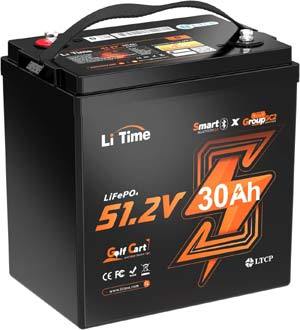
Also, they are often used as deep cycle batteries in marine applications, off-the-grid applications, for powering medical and security systems, and similar.
Although they are, by definition, 3-cell 6V batteries, GC2 and GC2H batteries are sometimes offered as 12V, 24V, and 48V batteries for building 24V, 36V, and 48V battery packs with fewer batteries.
0 notes
Text
CATL Unveils TENER: Zero-Degradation Energy Storage Breakthrough
CATL Introduces TENER: World's First Five-Year Zero-Degradation Energy Storage System with 6.25MWh Capacity

On April 9th, CATL revealed TENER, the world's inaugural mass-producible energy storage system boasting zero degradation within its initial five years of operation, in Beijing, China. With comprehensive safety features, a five-year lifespan free of degradation, and a robust 6.25MWh capacity, TENER is poised to accelerate the widespread adoption of new energy storage technologies and propel the sector toward higher quality standards.
Pioneering Mass-Production of Zero-Degradation Systems
While maintaining capacity over the first five years of use marks a significant leap forward in battery lifespan extension, ensuring zero degradation of power is equally crucial for energy storage power plants seeking to align with the demands of emerging electric power systems. By harnessing biomimetic SEI (solid electrolyte interphase) and self-assembled electrolyte technologies, TENER has overcome barriers to lithium ion movement, achieving zero degradation in both power and capacity. This guarantees consistent auxiliary power consumption levels throughout its entire lifecycle, effectively creating an "ageless" energy storage solution.
Empowered by state-of-the-art technologies and advanced manufacturing capabilities, CATL has addressed challenges posed by highly reactive lithium metals in zero-degradation batteries, thereby mitigating thermal runaway risks stemming from oxidation reactions.
Unmatched Energy Density in a Compact Form: 20-foot Container housing 6.25MWh Capacity

TENER boasts an impressive 6.25MWh capacity within a TEU container, marking a 30% increase in energy density per unit area and a 20% reduction in overall station footprint. This innovative design enhances energy density and efficiency within limited spatial constraints.
CATL's cutting-edge cell technology underpins the system's outstanding performance. TENER is equipped with long-lasting, zero-degradation cells tailored for energy storage applications, achieving an impressive energy density of 430 Wh/L, a significant milestone for LFP batteries used in energy storage.
Dedicated Quality Management for Ultimate Safety
In pursuit of ultimate safety in energy storage, CATL has established an end-to-end quality management system encompassing technology development, proof testing, operation monitoring, and safety failure analysis. Tailored safety goals are set for different scenarios, with corresponding safety technologies developed to meet these objectives. To validate these technologies, CATL has created a validation platform simulating safety tests for energy storage systems across various power grid scenarios. Post-deployment, CATL continuously monitors system operation via AI-powered risk monitoring and intelligent early warning systems, calculating product failure rates throughout their lifecycle to refine safety design goals.
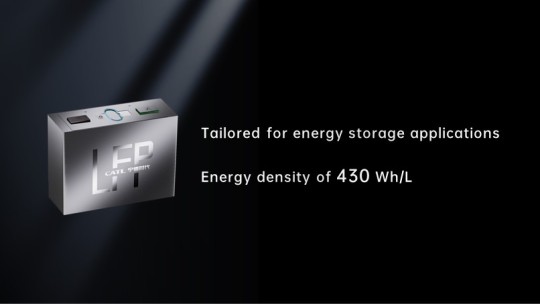
CATL has reduced cell failure rates to parts per billion levels for TENER, translating to lower operating costs and significantly enhanced internal rates of return when extended over the system's full lifecycle.
Energy storage plays a pivotal role in the green energy transition, and CATL is committed to delivering world-class solutions to customers globally. The introduction of TENER marks another milestone in CATL's ongoing commitment to energy transition. Looking ahead, CATL will continue its dedication to open innovation, collaborating with industry partners worldwide to lead the charge in innovation and advanced technology.
0 notes
Text

The 36V 80Ah lithium battery from Redway Power™ is an exceptional energy storage solution, particularly tailored for golf carts, and engineered with LiFePO4 technology for enhanced performance and longevity. This battery stands out with its ability to support up to 4000 cycles, a significant advantage over traditional lead-acid batteries, leading to lower costs over its service life. The 36V 80Ah lithium battery delivers a continuous output of 8 Amperes for 10 hours, providing a total energy capacity of 2,880 Watt-hours. Its design is not only robust but also lightweight and compact, making it ideal for integrating into electric vehicles and various other applications that require a dependable power source.The versatility of this 36V 80Ah lithium battery makes it suitable for a range of uses beyond golf carts, including marine applications where the 36V lithium ion marine battery is valued for its performance in harsh environments. The 36V lithium battery is also a popular choice for solar energy storage, offering efficient energy management and backup power support during outages. The 36V lithium ion battery’s high energy density and low self-discharge rate contribute to its appeal for portable power solutions and renewable energy systems.For seamless integration and upgrade, the 36V lithium battery charger and 36V lithium battery pack from Redway Power™ provide a comprehensive solution for maintaining and enhancing the performance of electric vehicles and other equipment. The golf cart 36v lithium battery conversion kit simplifies the transition to a more efficient and eco-friendly power source, making it an accessible option for those looking to upgrade their golf carts or other vehicles.In summary, the 36V 80Ah lithium battery from Redway Power™ is a reliable and efficient energy storage solution, offering a long cycle life, high energy density, and versatile application. Whether used in golf carts, marine vessels, solar energy systems, or as part of a backup power setup, this battery delivers consistent and reliable power supply, making it a preferred choice for both commercial and recreational applications.
#36V#36V 80Ah#Club Car Battery#E-Scooter Battery#Electric Cabin Scooter Battery#Electric Drive Battery#Electric Motocycle Battery#Electric Scooter Battery#Electric Tricycle Battery#Electric Trike Battery#Golf Cart Battery#LiFePO4 Battery#Lithium Battery#rickshaw trishaw#Tour LSV battery#Tuk Tuk Battery
0 notes
Text

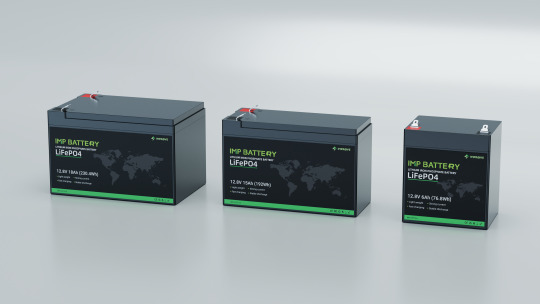
IMPROVE Lithium (LiFePO4) Battery Packs, 12.8V to 51.2V available
0 notes
Text
Understanding the Advantages of a Lifepo4 Battery

The spread of contemporary battery technology supporting sustainable alternatives has led to diminished carbon dioxide releases. In the following article, we explore the benefits that set the LiFePO4 battery apart in the constantly changing field of battery technology.
More Info: https://sonnypower.medium.com/understanding-the-advantages-of-a-lifepo4-battery-4806ff5614ae
0 notes
Text
youtube
Harveypower focus on the production of ESS, industrial/commercial solar energy storage batteries and RV batteries, the batteries used are the world's top CATL brand, the ODM&OEM services are provided all over the world.
In this video I will give you an introduction about the structure of the Harveypower factory and show the processes and principles of the operation of each department.
If you have any questions or anything else you would like to learn more about, please feel free to leave a comment in the comments section or contact us by email: [email protected]
#Youtube#lifepo4 battery#lithium iron phosphate battery#lithium#lithium battery#lithium manufacturer
3 notes
·
View notes
Text
Optimize Your Golf Cart's Performance with EVE LF105 Grade-A Cells 3.2V LiFePO4 105Ah Battery (with M4 Terminals)

Golf carts have become essential for both leisure and utility purposes, requiring dependable power sources to ensure smooth operation. The EVE LF105 Grade-A Cells 3.2V LiFePO4 105Ah Battery, featuring M4 terminals, offers an advanced power solution tailored to meet the specific demands of golf carts. In this article, we'll delve into the features and advantages of this cutting-edge battery, highlighting its ability to optimize your golf cart's performance and reliability.
Superior Grade-A Cells: At the core of the EVE LF105 Battery are superior-grade Grade-A cells, renowned for their exceptional performance and reliability. These cells are engineered to deliver consistent power output and extended lifespan, ensuring reliable operation for your golf cart even in challenging conditions.
Enhanced Capacity: With a capacity of 105Ah, the EVE LF105 Battery provides abundant energy storage to power your golf cart through extended rounds on the course or prolonged use in various environments. The optimized capacity ensures sustained performance and extended operating hours, allowing for uninterrupted enjoyment and productivity.
Efficient M4 Terminals: Equipped with M4 terminals, the EVE LF105 Battery offers efficient connectivity and easy installation in golf carts. The M4 terminals provide secure and reliable connections, minimizing energy loss and ensuring maximum power transfer for enhanced performance.
Compact and Lightweight Design: Despite its high capacity, the EVE LF105 Battery maintains a compact and lightweight design, facilitating easy installation and integration into your golf cart. The compact size minimizes space requirements, while the lightweight construction enhances maneuverability and handling, ensuring a seamless upgrade for your vehicle.
Seamless Integration: Engineered for seamless integration, the battery can be effortlessly installed in a wide range of golf cart models and configurations. Whether you're upgrading an existing vehicle or installing the battery in a new cart, the EVE LF105 Grade-A Cells 3.2V LiFePO4 105Ah Battery with M4 Terminals ensures compatibility and straightforward installation, minimizing downtime and maximizing productivity.
Conclusion: The EVE LF105 Grade-A Cells 3.2V LiFePO4 105Ah Battery with M4 Terminals offers an advanced power solution to optimize your golf cart's performance and reliability. With its superior-grade cells, enhanced capacity, efficient terminals, compact design, and seamless integration, this battery ensures a superior driving experience for golf cart enthusiasts. Upgrade your golf cart today and unlock its full potential with the EVE LF105 Battery.
0 notes
Text

Why choose energy storage batteries? During the day, excess solar energy is stored for night use to enhance the reliability and elasticity of the balcony energy storage system.
If you need product information or product price, please send me an email.
Email: [email protected]
Click on the website to understand product details:
#solar power#home solar#solar#solar system#off grid solar power#balcony#lifepo4 battery#off grid solar system
1 note
·
View note
Text
What functions does a solar inverter serve?
In the realm of PV systems, inverters stand out as the primary orchestrators of operational functionalities, surpassing other components in their pivotal role. Their responsibilities have expanded significantly, especially with the evolution of smarter systems that boast heightened interactions with the utility grid. As solar technologies advance, inverters take on an increasingly multifaceted role, overseeing a spectrum of tasks critical to the seamless integration and performance optimization of photovoltaic installations.
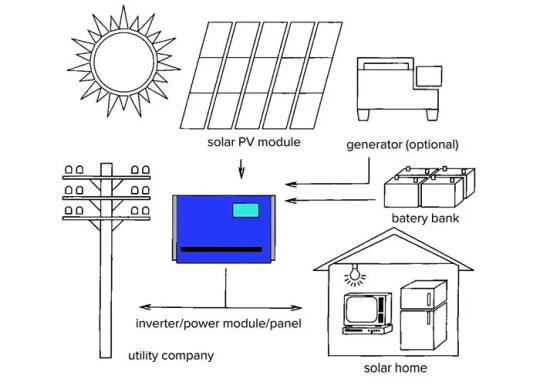
Transformation from DC to AC Power
At its core, the primary role of an inverter lies in the transformation of the electrical output from solar panels, converting direct current (DC) power into the more widely applicable alternating current (AC) power. This pivotal conversion ensures that the energy harnessed from the sun, in its original form, is seamlessly adapted for use in households, commercial establishments, or seamlessly integrated into large-scale grid projects, such as expansive utility-scale solar arrays. This fundamental function highlights the inverter's crucial role in bridging the gap between solar energy generation and diverse electricity consumption needs.
Optimizing Power Generation
Inverters play a crucial role in the continuous monitoring and optimization of power output from solar arrays. Their responsibility extends to tracking the voltage levels of the solar modules, identifying the optimal power level at which these modules can efficiently operate. As outlined by PVEL, environmental factors like shading or potential module degradation can pose challenges. In such scenarios, the inverter's role becomes pivotal as it ensures accurate identification of the peak power within the string, safeguarding against potential inefficiencies that might otherwise diminish the overall energy production of the solar system. This dynamic function underscores the inverter's contribution to maximizing the efficiency and performance of solar arrays under varying conditions.
Grid Integration and Communication
The evolution of solar inverters, particularly with the advent of smart inverters, signifies a transition from traditional one-way communication to a more sophisticated two-way interaction with the grid. The latest generation of inverters, equipped with advanced software capabilities, goes beyond the conventional role. These smart inverters facilitate seamless communication and interaction with the grid, offering multifaceted grid-support functions. Their capabilities extend to managing aspects such as voltage, frequency, and intricate communications and controls. This enhanced interface empowers the solar system to actively contribute to grid stability and reliability, marking a significant advancement in the capabilities of modern inverters.

Enhancing Grid Stability
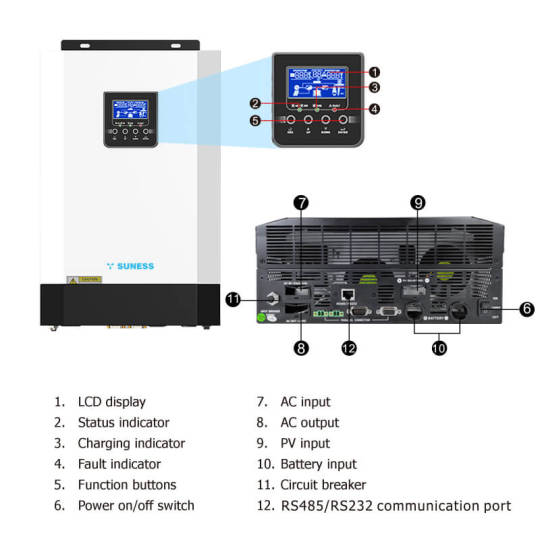
Monitoring and Reporting Power Generation
In addition to their pivotal role in the energy conversion process, inverters play a crucial role in enabling solar system owners to monitor and assess the power production of their solar installations. The majority of inverters are equipped with communication features, utilizing hardwired ethernet, Bluetooth, or Wi-Fi connectivity, as noted by PVEL. While this connectivity enhances accessibility for users, it also introduces potential cybersecurity risks, prompting ongoing efforts from scientists to develop robust solutions for mitigating these vulnerabilities. Exploring more on the subject of inverter cybersecurity provides valuable insights into the evolving landscape of solar technology.
Solar system proprietors have the convenience of accessing a wealth of information through inverters, ranging from error codes and diagnostics to comprehensive power production data. This valuable data is easily accessible, not only through personal computers but also via dedicated smartphone applications, such as the one provided by SolarEdge. For those overseeing expansive solar arrays, particularly in commercial or utility-scale settings, there's the option to enhance monitoring capabilities further. Engaging third-party vendors like Solar-Log offers advanced monitoring services, empowering solar owners to diagnose and address issues efficiently, ensuring optimal performance and reliability across multi-inverter arrays. This additional layer of support contributes to the overall efficiency and longevity of solar installations.
Uphold System Safety Measures Inverters play a pivotal role in maintaining the safety protocols of a solar system. They are designed to deactivate swiftly in scenarios where electrical arcs occur, a phenomenon often attributed to the natural wear and tear of system components or the degradation of materials. While these inverters are programmed to detect such arcs, a comprehensive evaluation by PVEL revealed disparities in their efficacy across various models. Notably, the Delta and Fronius inverters emerged as the frontrunners in PVEL's rigorous ground and arc fault assessments, underscoring their superior safety features and reliability in real-world applications.

Due to the intricate composition of numerous electronic components and the multitude of tasks they perform, inverters stand out as more susceptible to failure compared to other components within a PV system, as highlighted by PVEL. Both string and central inverters present distinct advantages and disadvantages, but in the inevitable event of a failure, string inverters offer a more straightforward and manageable servicing process. For a comprehensive guide on how installers can effectively prepare for potential inverter failures, delve into further details here.
0 notes